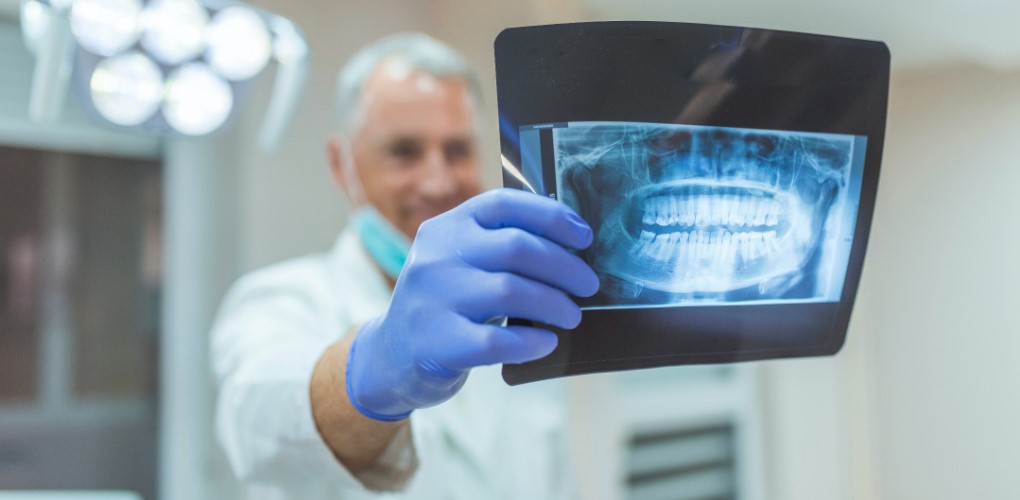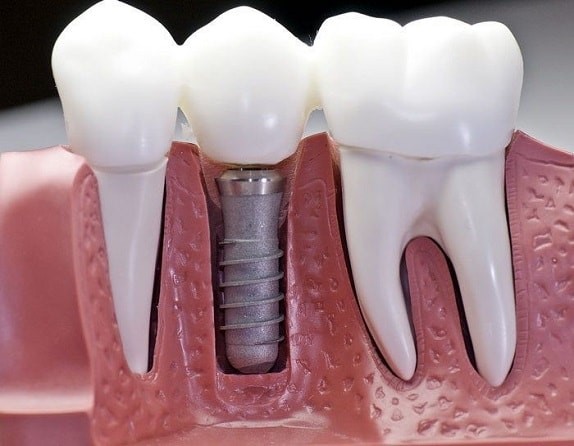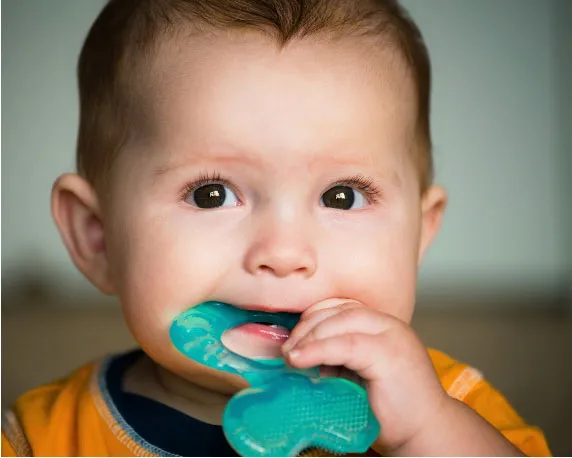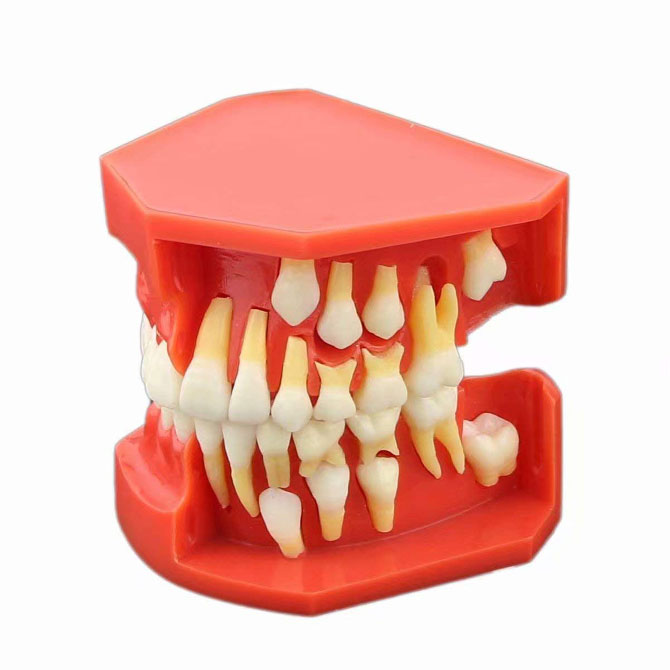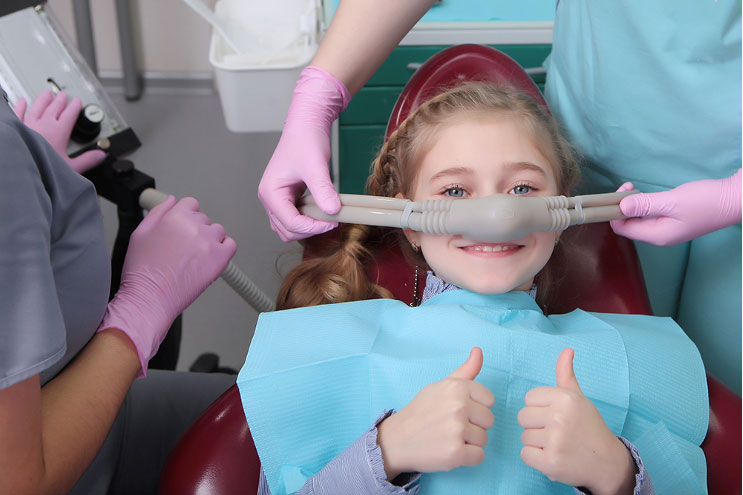Endocrown
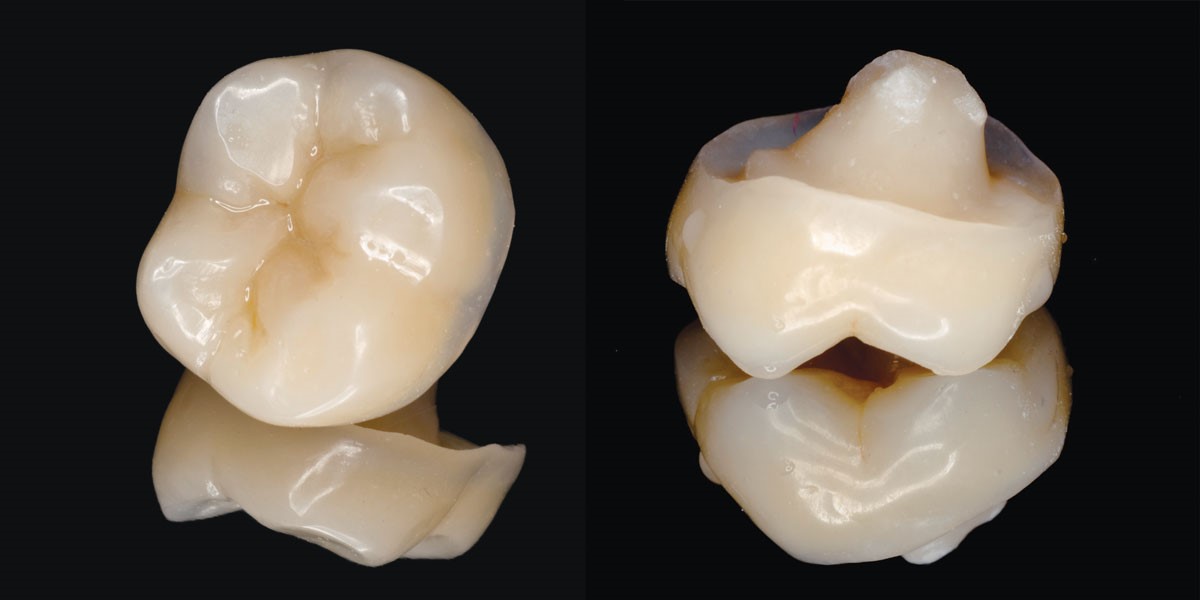
Endocrown: A Comprehensive Exploration of Preservation and Restoration in Modern Dentistry
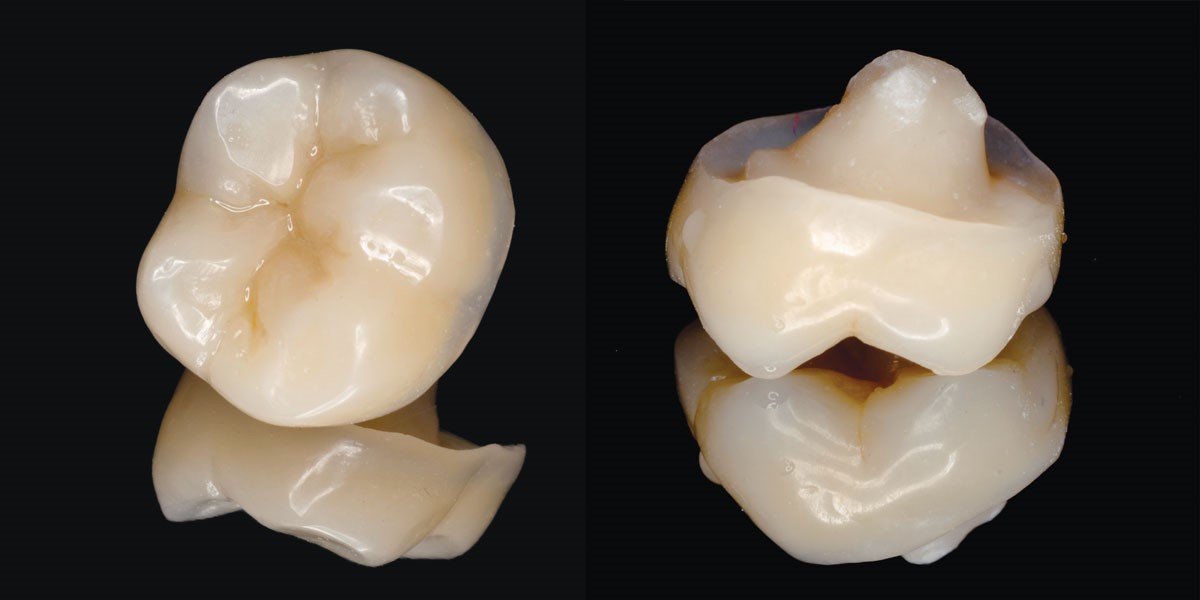
The evolution of restorative dentistry has ushered in innovative approaches to preserving natural tooth structure while effectively restoring compromised teeth. Among these advancements, the endocrown has emerged as a contemporary solution that seamlessly integrates endodontic and prosthetic principles. In this extended exploration, we delve deeper into the intricacies of endocrowns, encompassing the treatment process, eligible candidates, advantages, considerations, and the profound impact of this cutting-edge approach on the preservation and enhancement of dental function.
Endocrown: A Fusion of Endodontics and Prosthetics
Unraveling the Endocrown Concept
At the core of the endocrown concept lies a paradigm shift in restorative dentistry. Unlike traditional crowns, the endocrown adopts a monobloc, single-unit restoration approach that intricately blends endodontic therapy with crown placement. This harmonious integration aims not only to restore but to preserve the remaining tooth structure, minimizing the necessity for additional tooth preparation.
Decoding the Symbiosis
The seamless integration between endodontics and prosthetics in the endocrown design revolves around a fundamental principle—preserving tooth structure. This restoration encompasses both the clinical crown and the pulp chamber, creating a robust and aesthetically pleasing solution for extensively damaged teeth.
Eligible Candidates: Navigating Indications and Criteria
Endodontic Indicators
1. Insufficient Tooth Structure: Endocrowns find their ideal candidates in patients with teeth that have undergone extensive endodontic therapy, leaving limited coronal tooth structure.
2. Addressing Cavities and Fractures: Teeth with substantial cavities, fractures, or structural compromise are prime candidates for endocrown placement, offering a conservative solution to restore compromised dentition.
Prosthetic Considerations
1. Root Stability as a Prerequisite: Endocrowns necessitate a stable root foundation. Teeth with compromised root integrity may not be suitable candidates, emphasizing the need for a comprehensive evaluation.
2. Preservation of Adjacent Teeth: The conservative nature of endocrowns makes them an appealing choice for preserving the integrity of adjacent teeth, minimizing the impact on the overall dentition.
The Endocrown Process: From Delicate Preparation to Precise Restoration
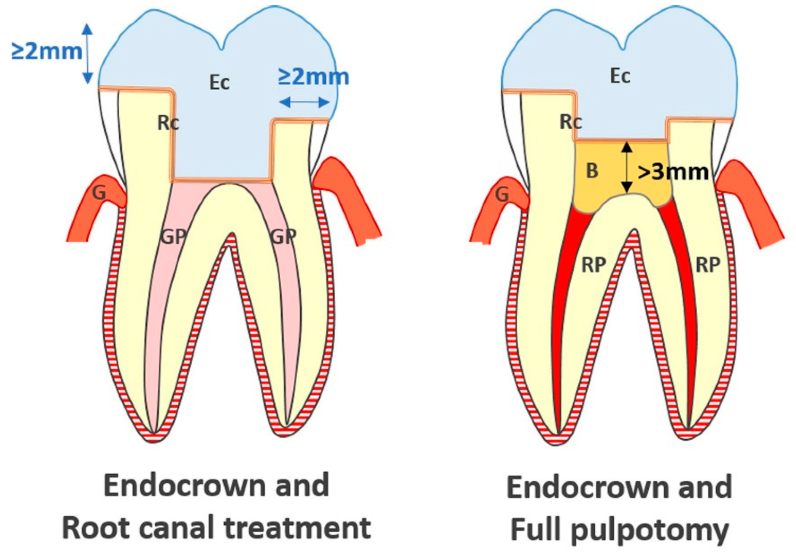
Strategic Tooth Preparation
1. Minimal Tooth Reduction as a Guiding Principle: A hallmark of the endocrown approach is the preservation of healthy tooth structure. The preparation involves minimal tooth reduction, aligning with the principles of conservative dentistry.
2. Pulp Chamber Modification for Optimal Fit: The preparation phase includes modifications to the pulp chamber to accommodate the endocrown, ensuring a secure and durable fit.
Impression Precision and Monolithic Fabrication
1. Essence of Accurate Impressions: Accurate impressions are pivotal for the fabrication of the endocrown. The advent of digital impressions enhances precision and contributes to the overall success of the restoration.
2. Monolithic Construction: Endocrowns are often fabricated from monolithic materials like zirconia or lithium disilicate, ensuring both strength and aesthetic appeal. The monolithic design contributes to the longevity and resilience of the restoration.
Placement Protocols and Bonding Brilliance
1. Cementation Precision: Cementation of the endocrown onto the tooth structure involves adhesive techniques, promoting a strong bond between the restoration and the remaining tooth.
2. Occlusal Adjustment for Optimal Function: Fine-tuning the occlusion is a critical step, ensuring proper function and minimizing stress on the restoration. This meticulous process contributes to the longevity of the endocrown.
Advantages of Endocrowns: A Symphony of Preservation and Strength
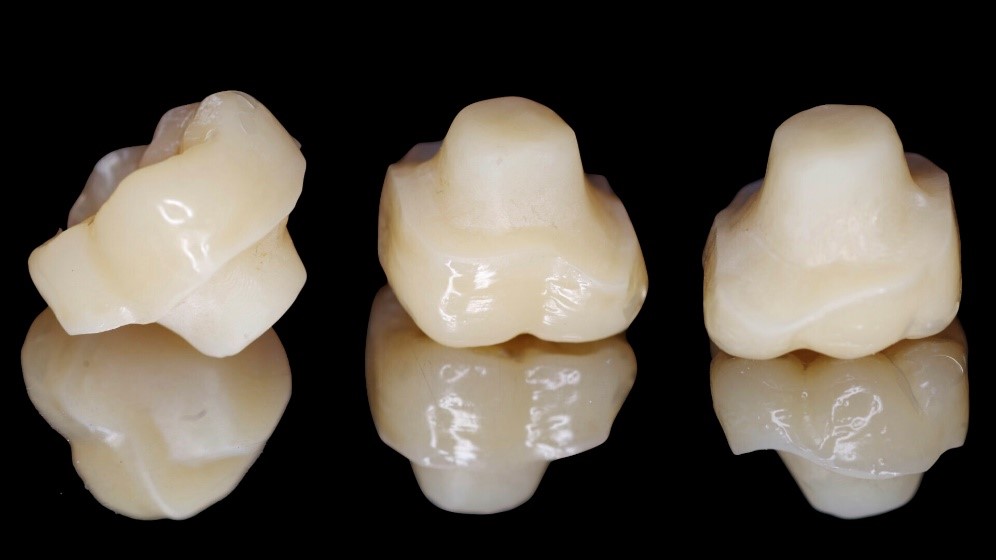
Conservative Approach and Biomechanical Integrity
1. Championing Preservation: The primary advantage of endocrowns lies in the preservation of tooth structure. The minimal tooth reduction aligns with conservative dentistry principles, ensuring that healthy tooth structure remains intact.
2. Biomechanical Harmony: By utilizing the remaining tooth structure, endocrowns contribute to maintaining the tooth's biomechanical integrity. This characteristic is pivotal for long-term success.
Strength and Durability at the Forefront
1. Monobloc Design for Enhanced Strength: The monobloc construction of endocrowns enhances their strength, reducing the risk of restoration failure. This design choice ensures a robust restoration that can withstand functional stresses.
2. Resistance Against Fracture: Endocrowns exhibit resilience against fractures, making them suitable for restoring teeth with compromised structural integrity. The monolithic nature of the restoration contributes to its durability.
Aesthetic Excellence and Longevity
1. Natural Aesthetics as a Hallmark: The material choices and minimal tooth reduction associated with endocrowns contribute to their natural appearance, blending seamlessly with the patient's dentition.
2. Stain Resistance for Long-Term Aesthetics: Materials like zirconia and lithium disilicate, commonly used for endocrowns, offer stain resistance, ensuring that the restoration maintains its aesthetic appeal over the long term.
Considerations and Limitations: Navigating Challenges with Precision
Root Stability, Canal Anatomy, and Case Complexity
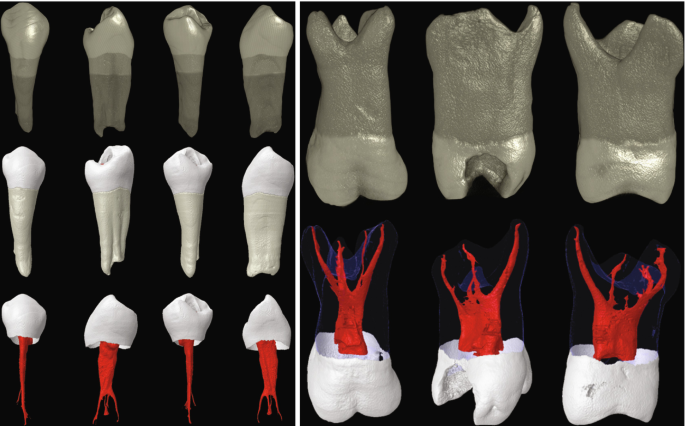
1. Critical Evaluation of Root Structure: Thorough assessment of root stability is essential to ensure the longevity of the endocrown. Cases with compromised root integrity may pose challenges.
2. Navigating Complex Canal Anatomy: The clinician must navigate complex root canal anatomy during endocrown preparation and placement, addressing challenges with precision.
Material Selection Nuances and Biocompatibility Awareness
1. Tailored Material Choices: The choice of materials should be tailored to individual cases, considering factors such as occlusion, aesthetic requirements, and the patient's oral hygiene practices.
2. Biocompatibility as a Prime Consideration: While rare, allergic reactions or tissue irritations may occur. Selecting biocompatible materials is essential to minimize such risks and ensure patient safety.
Conclusion: A Pinnacle of Preservation and Restoration in Dentistry
In conclusion, the endocrown represents a pinnacle in the integration of preservation and restoration within modern dentistry. This innovative approach aligns with the evolving ethos of restorative dentistry, where the emphasis is not only on restoring function but on preserving natural tooth structure whenever possible.
The amalgamation of endodontic and prosthetic principles in the endocrown's design underscores the dynamic nature of dental innovation. This restoration is not merely a solution; it's a testament to the ongoing pursuit of balance in the preservation and restoration of dental structures.
As the endocrown journey continues from concept to clinical reality, it exemplifies how thoughtful integration of disciplines can lead to advancements that benefit both clinicians and patients. The endocrown is more than a restoration; it's a symphony of preservation and strength, a manifestation of precision and longevity that elevates the quality of dental care to new heights.
Sources
- [International Journal of Oral Science - Endocrown restorations: A systematic review and meta-analysis](https://www.nature.com/articles/s41368-020-00100-6)
- [Journal of Prosthetic Dentistry - Fracture resistance of endodontically treated molars restored with Endocrowns](https://pubmed.ncbi.nlm

Endocrown: A Comprehensive Exploration of Preservation and Restoration in Modern Dentistry

The evolution of restorative dentistry has ushered in innovative approaches to preserving natural tooth structure while effectively restoring compromised teeth. Among these advancements, the endocrown has emerged as a contemporary solution that seamlessly integrates endodontic and prosthetic principles. In this extended exploration, we delve deeper into the intricacies of endocrowns, encompassing the treatment process, eligible candidates, advantages, considerations, and the profound impact of this cutting-edge approach on the preservation and enhancement of dental function.
Endocrown: A Fusion of Endodontics and Prosthetics
Unraveling the Endocrown Concept
At the core of the endocrown concept lies a paradigm shift in restorative dentistry. Unlike traditional crowns, the endocrown adopts a monobloc, single-unit restoration approach that intricately blends endodontic therapy with crown placement. This harmonious integration aims not only to restore but to preserve the remaining tooth structure, minimizing the necessity for additional tooth preparation.
Decoding the Symbiosis
The seamless integration between endodontics and prosthetics in the endocrown design revolves around a fundamental principle—preserving tooth structure. This restoration encompasses both the clinical crown and the pulp chamber, creating a robust and aesthetically pleasing solution for extensively damaged teeth.
Eligible Candidates: Navigating Indications and Criteria
Endodontic Indicators
1. Insufficient Tooth Structure: Endocrowns find their ideal candidates in patients with teeth that have undergone extensive endodontic therapy, leaving limited coronal tooth structure.
2. Addressing Cavities and Fractures: Teeth with substantial cavities, fractures, or structural compromise are prime candidates for endocrown placement, offering a conservative solution to restore compromised dentition.
Prosthetic Considerations
1. Root Stability as a Prerequisite: Endocrowns necessitate a stable root foundation. Teeth with compromised root integrity may not be suitable candidates, emphasizing the need for a comprehensive evaluation.
2. Preservation of Adjacent Teeth: The conservative nature of endocrowns makes them an appealing choice for preserving the integrity of adjacent teeth, minimizing the impact on the overall dentition.
The Endocrown Process: From Delicate Preparation to Precise Restoration

Strategic Tooth Preparation
1. Minimal Tooth Reduction as a Guiding Principle: A hallmark of the endocrown approach is the preservation of healthy tooth structure. The preparation involves minimal tooth reduction, aligning with the principles of conservative dentistry.
2. Pulp Chamber Modification for Optimal Fit: The preparation phase includes modifications to the pulp chamber to accommodate the endocrown, ensuring a secure and durable fit.
Impression Precision and Monolithic Fabrication
1. Essence of Accurate Impressions: Accurate impressions are pivotal for the fabrication of the endocrown. The advent of digital impressions enhances precision and contributes to the overall success of the restoration.
2. Monolithic Construction: Endocrowns are often fabricated from monolithic materials like zirconia or lithium disilicate, ensuring both strength and aesthetic appeal. The monolithic design contributes to the longevity and resilience of the restoration.
Placement Protocols and Bonding Brilliance
1. Cementation Precision: Cementation of the endocrown onto the tooth structure involves adhesive techniques, promoting a strong bond between the restoration and the remaining tooth.
2. Occlusal Adjustment for Optimal Function: Fine-tuning the occlusion is a critical step, ensuring proper function and minimizing stress on the restoration. This meticulous process contributes to the longevity of the endocrown.
Advantages of Endocrowns: A Symphony of Preservation and Strength

Conservative Approach and Biomechanical Integrity
1. Championing Preservation: The primary advantage of endocrowns lies in the preservation of tooth structure. The minimal tooth reduction aligns with conservative dentistry principles, ensuring that healthy tooth structure remains intact.
2. Biomechanical Harmony: By utilizing the remaining tooth structure, endocrowns contribute to maintaining the tooth's biomechanical integrity. This characteristic is pivotal for long-term success.
Strength and Durability at the Forefront
1. Monobloc Design for Enhanced Strength: The monobloc construction of endocrowns enhances their strength, reducing the risk of restoration failure. This design choice ensures a robust restoration that can withstand functional stresses.
2. Resistance Against Fracture: Endocrowns exhibit resilience against fractures, making them suitable for restoring teeth with compromised structural integrity. The monolithic nature of the restoration contributes to its durability.
Aesthetic Excellence and Longevity
1. Natural Aesthetics as a Hallmark: The material choices and minimal tooth reduction associated with endocrowns contribute to their natural appearance, blending seamlessly with the patient's dentition.
2. Stain Resistance for Long-Term Aesthetics: Materials like zirconia and lithium disilicate, commonly used for endocrowns, offer stain resistance, ensuring that the restoration maintains its aesthetic appeal over the long term.
Considerations and Limitations: Navigating Challenges with Precision
Root Stability, Canal Anatomy, and Case Complexity

1. Critical Evaluation of Root Structure: Thorough assessment of root stability is essential to ensure the longevity of the endocrown. Cases with compromised root integrity may pose challenges.
2. Navigating Complex Canal Anatomy: The clinician must navigate complex root canal anatomy during endocrown preparation and placement, addressing challenges with precision.
Material Selection Nuances and Biocompatibility Awareness
1. Tailored Material Choices: The choice of materials should be tailored to individual cases, considering factors such as occlusion, aesthetic requirements, and the patient's oral hygiene practices.
2. Biocompatibility as a Prime Consideration: While rare, allergic reactions or tissue irritations may occur. Selecting biocompatible materials is essential to minimize such risks and ensure patient safety.
Conclusion: A Pinnacle of Preservation and Restoration in Dentistry
In conclusion, the endocrown represents a pinnacle in the integration of preservation and restoration within modern dentistry. This innovative approach aligns with the evolving ethos of restorative dentistry, where the emphasis is not only on restoring function but on preserving natural tooth structure whenever possible.
The amalgamation of endodontic and prosthetic principles in the endocrown's design underscores the dynamic nature of dental innovation. This restoration is not merely a solution; it's a testament to the ongoing pursuit of balance in the preservation and restoration of dental structures.
As the endocrown journey continues from concept to clinical reality, it exemplifies how thoughtful integration of disciplines can lead to advancements that benefit both clinicians and patients. The endocrown is more than a restoration; it's a symphony of preservation and strength, a manifestation of precision and longevity that elevates the quality of dental care to new heights.
Sources
- [International Journal of Oral Science - Endocrown restorations: A systematic review and meta-analysis](https://www.nature.com/articles/s41368-020-00100-6)
- [Journal of Prosthetic Dentistry - Fracture resistance of endodontically treated molars restored with Endocrowns](https://pubmed.ncbi.nlm





